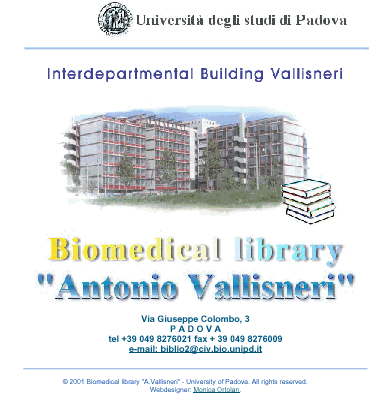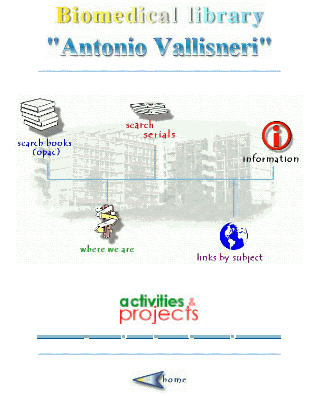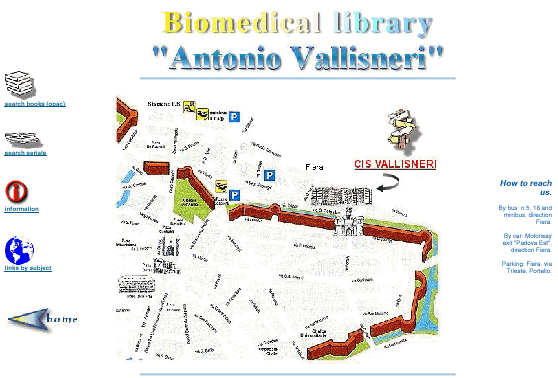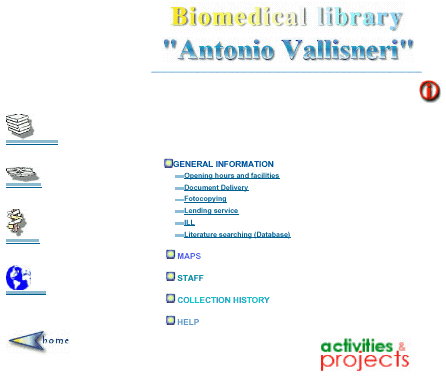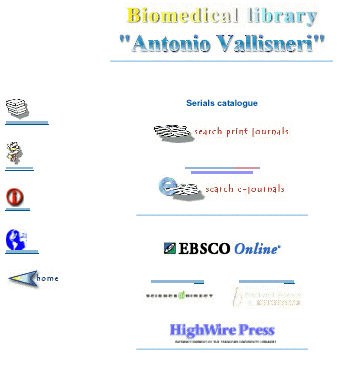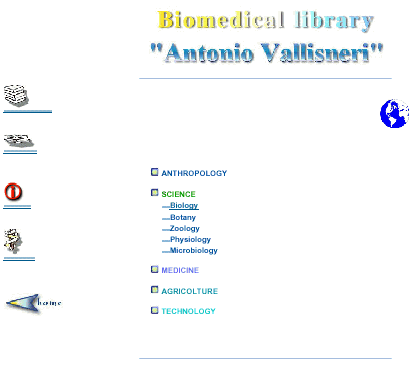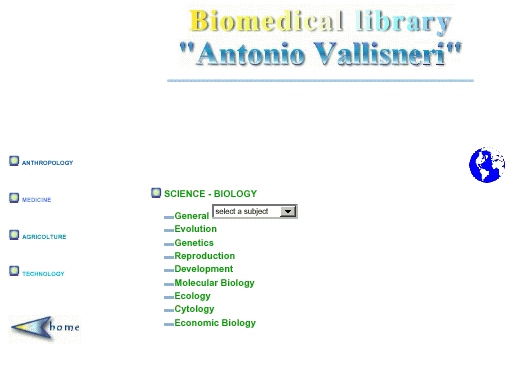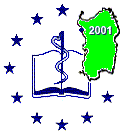 |
Information at the fingertips:
a portal for biomedicine.
Elisabetta Marinoni, Monica Ortolan,
Antonella Zane, *Roberta Sato
|
|
|
|
|
|
 |
The amount of information potentially available for the biomedical researcher has grown exponentially in recent years. Most of this information is available on-line, but efficient and exhaustive use of it is rendered problematic by the way in which it is organised. The researcher is often confused by the quantity of information and by the lack of quality control of that information. The documentalist therefore has a strategic role to play in the orientation of the researcher's choices. In order to meet our users' needs, we have begun a portal project for biomedicine that may be able to supply, in a systematic if not exhaustive manner, indications and suggestions to those searching for information on the Internet. A portal is a service that functions as a mediator and as a collector of information for Internet users, enabling users to access a large quantity of resources, by means of a particular point of entrance to the Internet. The portal we are creating is a tool being prepared for the researcher and not for the librarian, and is therefore a reference tool. It will be organised, even if not explicitly, along the lines of the Library of Congress and the National Library of Medicine classification systems, since this is the way in which documentary material found in biomedical libraries is usually organised. Researchers will therefore find themselves in front of an open-shelved virtual library, where the resources relating to a certain topic are in proximity to those relating to similar topics. Infact, information being looked for often cannot be expressed easily with a query, but requires a path consisting of successive approximations, until the best source of information is identified. The purpose of the current work is to illustrate the project by means of the preliminary phases of examination and choice of the sources of information as well as by means of the first model for the organisation of those sources, which was done in order to facilitate research for those operating in the biomedical sector. The factors that we have been obliged to consider dealt with: 1) Search and selection in the resource network; 2) Presentation of Web resources within our site. We focused our attention on the quality of the information resources to be made available to our users and on the construction of an efficient virtual version of our library. As far as the selection of resources is concerned, we considered the following characteristics: Authoritativeness: authoritativeness was determined both by taking the body responsible for the resource into consideration, and by considering the number of links that lead to the resource itself, assuming that a very "linked" resource is authoritative. Appropriateness: appropriateness was evaluated by examining the pertinence of the documents to the mission of a bio-medical library Stability: the most stable resources were evaluated and links to meta-resources, which, because of their very nature, are less subject to URL changes, were given priority. Friendliness: as far as friendliness is concerned, the following were considered: ergonomics (making it possible to navigate following free associative paths, without the risk of getting lost), and the independence of the browser type. Updating: the resources were also evaluated on the basis of regular and punctual updating. In order to guarantee the quality of our Web pages, we referred to the guidelines that have by now become standard for Web page publishing, guidelines that could help us present the information in a homogeneous manner. Web design: guidelines - Create a site identity - Give each page a title - Simple and synthetic screens - Centre important links on the screen - Distinguish links from text and graphics - Reduce to a minimum the necessity for scrolling - Provide help for users - Use graphics, animation and moving banners minimally. Our objective is to choose resources and construct Web pages that are an effective help not only for researchers and senior students but also for undergraduate users. Figures 1, 2, 3, 4, 5 show a roundup of what we have already set up: the home page, the main menu, location of library on the city map, general information on services, access to print and e-journals catalogues. As you can see from the URL (http://www-fog.bio.unipd.it/library/), we could not observe for the moment an important guideline that suggest to use URL easy to remember. Our library in fact has not an its own server but our html pages are hosted in a interdepartmental server.
Figure 1
Figure 2
Figure 3
Figure 4
Figure 5
What we are trying to do now is to organise a framework of links by subject along the lines of LC classification systems (Figure 6, 7). This is our open-shelved virtual library where, instead of books, we find selected web resources. This is only a first model, a prototype. An important feedback is expected from our users, especially undergraduate students. We offer in fact training courses for students on the use of main information searching tools: catalogues, bibliographic databases and web resources besides "guided tours" of library, its arrangement, its book classification and location. These courses are integrated within faculty syllabuses and involve hundreds of students every year.
Figure 6
Figure 7
Future plans and goals therefore will be directed towards:
References - Factors affecting the quality of an information source.
|
|
|
|
|
